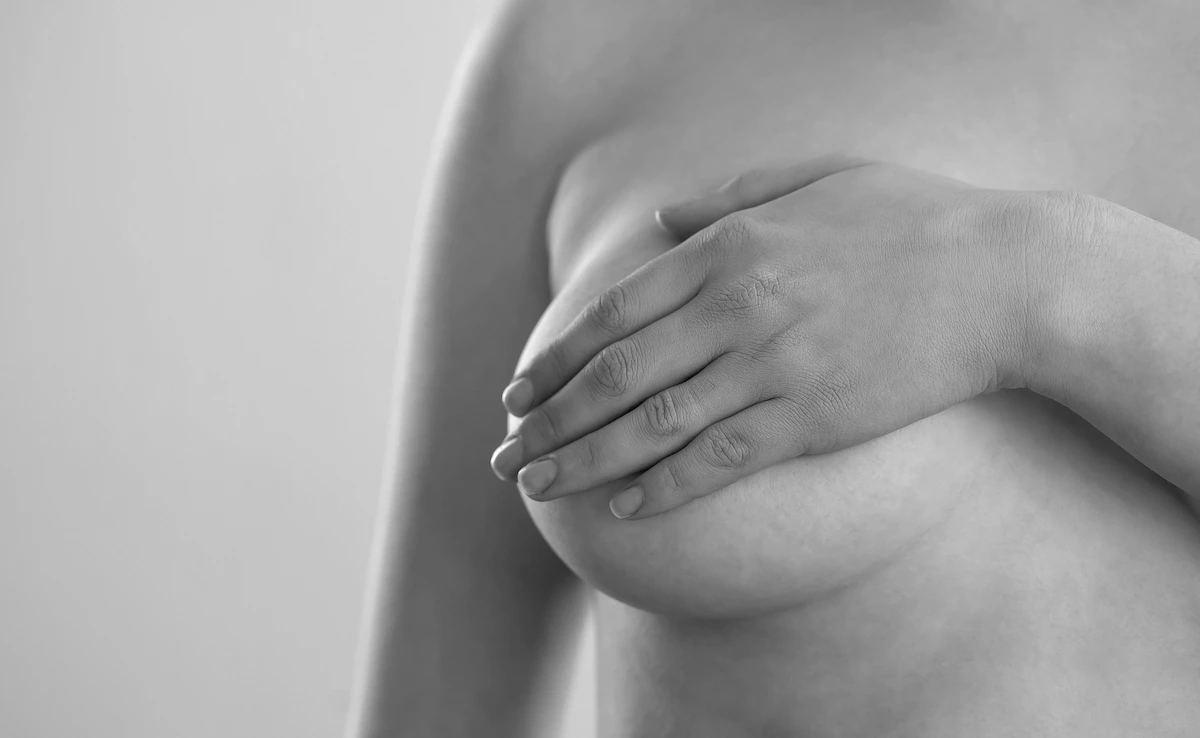Breast Reconstruction Surgery

Is Breast Reconstruction Right for Me?
Every woman’s journey is different. The choice to pursue breast reconstruction is deeply personal, but research shows the procedure can improve confidence and sexuality, and serve as a beacon of hope during your cancer journey. You may be a candidate if you’ve undergone mastectomy or lumpectomy and want to restore breast volume, reduce reliance on prosthetics, or simply feel like yourself again. Dr. Rednam will help you explore options that align with your recovery timeline and lifestyle goals.
Breast Reconstruction Procedures
Breast reconstruction is a type of breast surgery to rebuild the breast mound after a mastectomy, trauma, or birth defect. Dr. Rednam offers comprehensive reconstruction surgeries tailored to your unique needs and desired outcome. She is one of the few surgeons worldwide performing the microfascial DIEP technique.
Options fall into three main categories: autologous reconstruction (using your own tissue), implant-based reconstruction, and aesthetic flat closure.
Autologous Breast Reconstruction:
Using your body’s own fat and tissue creates the most natural, long-lasting results. These “flap” procedures don’t impact muscle tissue and require little to no long-term maintenance, yielding breasts that look and feel completely natural.
Implant Based Breast Reconstruction:
Modern implant reconstruction provides excellent results with shorter surgery time and faster initial recovery. Dr. Rednam uses the latest technology for beautiful, symmetric outcomes.
Deep Inferior Epigastric Perforator (DIEP) Flap
DIEP flap breast reconstruction is Dr. Rednam’s reconstructive procedure of choice because it enables her to create breasts that look and feel natural without removing or damaging the abdominal muscles. For this muscle-sparing breast reconstruction procedure, Dr. Rednam harvests blood vessels, skin, and fat from the lower abdomen. As an added benefit, patients who undergo DIEP flap breast reconstruction often enjoy results similar to those achieved with a tummy tuck, including a flatter, tighter abdominal area.
Stacked Flap Deep Inferior Epigastric Perforator (DIEP) Flap
When a patient does not have adequate skin and fat in the lower abdomen to be used for breast reconstruction, Dr. Rednam may recommend a stacked deep inferior epigastric perforator (DIEP) flap procedure for single breast reconstruction. This type of breast reconstruction employs a flap of fat, tissue, and vessels from the abdomen (DIEP flap), which may be folded or “stacked” on top of itself.
Implant Based Breast Reconstruction
Dr. Rednam may recommend implant-based breast reconstruction for patients who aren’t suitable candidates for a lengthier flap reconstruction procedure, or who lack sufficient donor tissue. Some patients may also prefer breast reconstruction with implants over a flap procedure due to their desired aesthetic or because surgical incisions and scars are limited to the chest area.
However, it is important to note that breast reconstruction using implants generally requires more than one surgical procedure. Additionally, breast implants made from saline or silicone will eventually need to be replaced and may yield results that look and feel less natural than those obtained with flap reconstruction.
Direct-to-Implant Breast Reconstruction
Direct-to-implant breast reconstruction generally entails a shorter surgical procedure and recovery time than flap reconstruction. Breast reconstruction with implants is conducted in a similar way that a traditional breast augmentation is performed, using round silicone implants.
Direct-to-implant breast reconstruction is performed at the same time as mastectomy in the right candidates. In some cases, this may be the only reconstructive surgery needed, while in others, a staged approach may be recommended with structural fat grafting.
Tissue Expanders Followed by Implants
In this staged breast reconstruction, Dr. Rednam uses tissue expanders prior to placing breast implants in patients, either at the time of mastectomy or in a subsequent procedure.
Tissue expanders are like temporary implants that are surgically inserted in the area where a breast implant will eventually be placed. Over time, Dr. Rednam incrementally adds fluid to tissue expanders during simple office visits so that the surrounding skin slowly stretches to make room for a silicone breast implant. Once skin is sufficiently stretched, the tissue expanders are replaced with breast implants. Tissue expanders allow patients to increase or decrease their pre-surgical breast size depending on their preference. They also allow patients to see what changes may look like before committing to an implant size.
Tissue expanders may also be used at the time of mastectomy before autologous reconstruction if radiation or other treatments may be needed.
Aesthetic Flat Closure
Growing in popularity, this procedure provides a smooth, flat closure without recreating the breast mound. Differing slightly from the standard mastectomy, this procedure will involve a plastic surgeon for more extensive care to create an aesthetic closure, celebrating your choice to embrace your body as you desire.


Dr. Rednam Discusses Breast Reconstruction
The Breast Reconstruction Procedure
No matter which procedure you choose, Dr. Rednam and her staff will guide you through every step of the way with care and compassion.
Personalized Consultation
Dr. Rednam takes a personalized approach to understand your unique situation. She’ll discuss your cancer treatment timeline, examine your anatomy, and explore your aesthetic goals to recommend the best approach for your individual needs.
What to Expect
You’ll receive comprehensive pre-operative instructions and know exactly what to expect. Dr. Rednam’s team coordinates closely with your oncology providers, ensuring seamless communication throughout your treatment journey for optimal care.
Recovery and Results
Recovery varies by procedure type, but most patients resume light activities within 2-3 weeks with no restrictions by 6-8 weeks. You’ll have scheduled follow-ups to monitor healing, and Dr. Rednam provides individualized recovery instructions tailored to your specific surgery.
Why Dr. Rednam Is Houston’s Trusted Choice for Breast Reconstruction
Dr. Rednam combines fellowship training in aesthetic surgery with advanced microsurgical techniques, including the microfascial DIEP procedure. Her technical expertise allows her to create natural-looking, lasting results using your body’s own tissue.
What truly matters to Dr. Rednam is understanding that reconstruction goes beyond the physical—it’s about helping you feel like yourself again. She takes time to listen to your story, address your concerns, and guide you through each step of the process. Her patients appreciate not only their surgical results, but the supportive, judgment-free environment she creates during a vulnerable time in their lives.

FAQs About Breast Reconstruction
Breast Reconstruction FAQs
Most women who’ve undergone mastectomy or lumpectomy are candidates. Dr. Rednam evaluates your overall health, cancer treatment timeline, body anatomy, and personal goals to recommend the most appropriate approach for your unique situation.
Sensation recovery varies by technique and individual healing patterns. Autologous reconstruction like DIEP flaps offers the best potential for sensation return, as living tissue can develop new nerve connections over time.
Implant reconstruction offers shorter surgery times and faster initial recovery but may require future replacement. Flap reconstruction uses your own tissue for more natural feel and appearance with permanent, living results that require minimal long-term maintenance.
Reconstruction doesn’t prevent necessary cancer surveillance. Different techniques may require modified imaging approaches, which Dr. Rednam coordinates with your oncology team to ensure appropriate follow-up protocols.
The Women’s Health and Cancer Rights Act requires most insurance plans to cover breast reconstruction following mastectomy, including procedures on the opposite breast for symmetry. Dr. Rednam’s team handles pre-authorization and works with your insurance provider.
Schedule a Personalized Breast Surgery Consultation
Every reconstruction journey is unique, and the decision deserves careful consideration with a surgeon who understands both the medical and emotional aspects of your experience. Dr. Rednam takes time to listen to your story, discuss your goals, and help you explore options that feel right for your situation.
Whether you’re considering immediate reconstruction or exploring your choices for the future, a consultation provides the information and support you need to make confident decisions about your care. Contact us to schedule your consultation and take the next step in your journey.
Dr. Rukmini Rednam has either authored or reviewed and approved this content.
Page Updated: